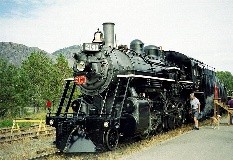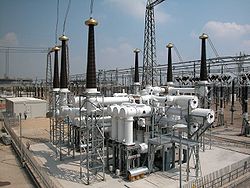The complexity of GIS station with multiple operating voltages and above ground GIS configuration combines to produce a very complicated grounding system. Induction between faulted phase conductors and associated enclosures can result in circulating currents that generate sufficient voltage drop between switchgear enclosures and the grounding grid to warrant special analysis.
The GIS substation has most of its electrical structure contained in sealed tubular enclosures. These conductive enclosures, underground grounding grid and above ground bus bars, all contribute to the grounding system. So the software should be capable of meddling above ground and below ground structures. For the study of GIS substation grounding system, modeling the enclosures is very important. The selected package should be capable of modeling the inner and outer layers of enclosure. The fault inside an enclosure will cause a significant induction between faulted inner buses and enclosures. Same can happen between enclosures & ground conductors. For large grounding system, the inductive coupling between grounding grid and parallel above ground bus bars plays a vital role. The MultiFields package is recommended for GIS substation grounding design.
The method is based on a field theory approach and it takes into account voltage drop along conductors in the grounding system and therefore eliminating the assumption that the grounding system is an equipotential structure.
MultiFields
This package accounts not only for conductor impedance, but also for inductive, capacitive and conductive coupling between all conductors modeled, allowing the user to specify any number of horizontal soil layers and both overhead and buried conductors. Furthermore, this package also computes electric and magnetic fields in air and in soil. MultiFields can be used not only for grounding studies, but also for electromagnetic compatibility studies, safety studies involving induction or capacitive coupling, modeling of grounding grid impedance testing with long leads (and the associated inductive coupling between leads, grounding conductors and overhead conductors). Furthermore, MultiFields is accurate from DC to gigahertz, making it the ideal tool to study the effects of transients, such as lightning, on grounding systems. MultiFields has the ability for the above and below ground conductors modeling such as cables and overhead lines, as well as transformers, GIS and GIL systems.





